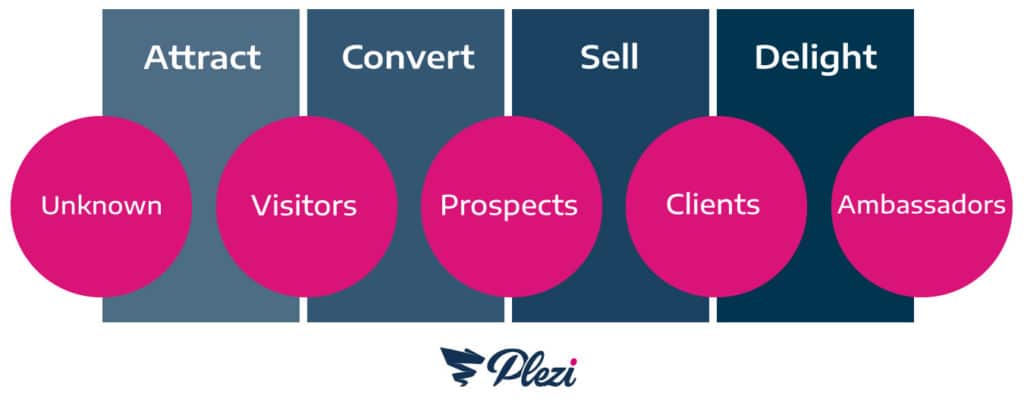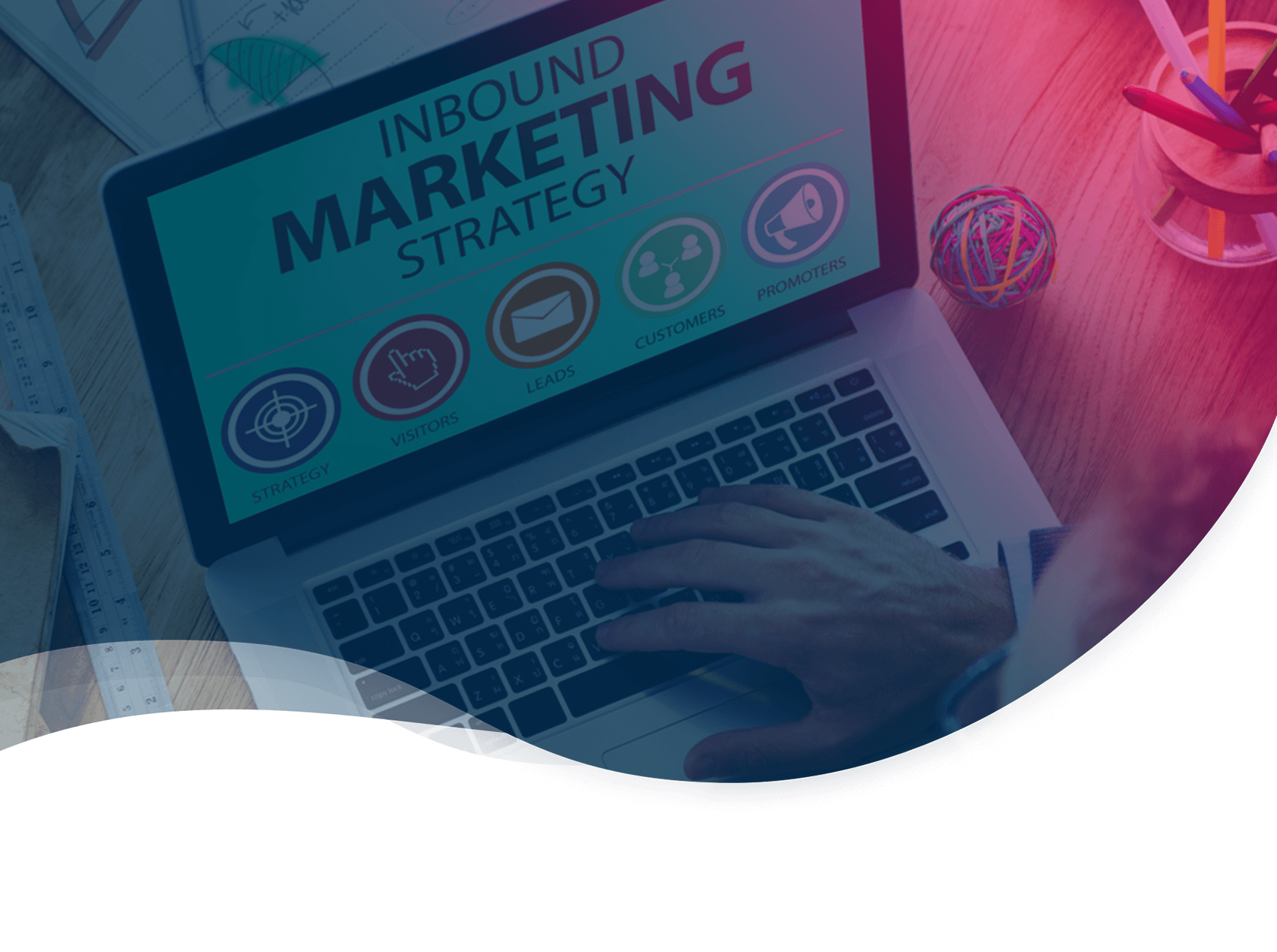If you want to generate more leads, you need to have a definite system in place for creating content. That starts with defining both your sales and marketing objectives, and then choosing content formats that are best suited to your target audience. If you’re serious about turning your B2B prospects into leads, you need to learn how to capture their attention by providing them with the right content at the right time. Follow our handy guidelines below and take the first step to become a digital marketing superstar.
01. Reach a larger online audience
The inbound marketing process can be divided into four basic steps:
– Attract: to attract visitors to your website, create a blog and regularly post articles to it, select the keywords you want to rank on for SEO, and promote your articles on social networks.
– Convert: to convert your visitors into leads, place calls to action, contact forms, white papers, and landing pages at strategic locations on both your blog and website to collect visitors’ details such as their email address.
– Sell: to turn your leads into customers, contact them via email and monitor the signs that indicate whether they are interacting with your company online.
– Delight: to turn your customers into brand ambassadors, invite them to events and make use of their online presence to amplify your communication on social networks.

02. Position your company as an authority
In order to speak effectively to your buyer personas you need to understand how they think. Not all those who visit your website have the same level of knowledge, and not all of them are as ready to buy as others. Therefore, you need to know what’s really going on inside their head at each stage of the buyer’s journey.
Here you need to think about what actions your B2B prospect might take and provide them with content that will build trust in your company and help guide them in their journey. Having a content strategy is now the best way to generate B2B leads and increase revenue online. Lead generation will enable you to attract those visitors who are interested in the very issues that you address. In this way, you can set the ground-work for introducing your product to them in a very natural way. By putting in place an inbound marketing strategy, you will be able to demonstrate your expertise and to instil confidence in your prospect throughout the buyer’s journey using content that meets their needs.
03.Generate far more qualified leads
In order to convert and retain B2B prospects, you first need to bring them to your website. You can do this by implementing content marketing or inbound marketing strategy to inform and educate them. There is a range of content formats available that you can use to do this. By varying the formats you use and demonstrating both your expertise and understanding of the market, you will greatly improve your chances of seeing an ROI on your strategy and start to create inbound leads.
Awareness stage content (e.g. articles, infographics, glossaries, videos, podcasts, tutorials): create content that can be easily understood and remembered and identify which keywords you need to target to improve your visibility to generate new leads. Example: our blog article 24 tips to improve your B2B conversion rate
In-depth content (e.g. whitepapers, case studies, analysis, expert interviews, long-form articles): produce content with high added value. Engage your prospects by talking about the problems they face and solutions that address their pain points. To do this, produce a case study, conduct a survey, or write an opinion piece to spark debate.
Premium content (e.g. white papers, case studies, and webinars): are your products or services what they claim to be? Offer your prospects a survey of current customers, a complimentary service, or a webinar to interact with them and build trust in your company.
Examples:
– Our webinar: Digital Marketing – short term vs long term
– The white paper Lead Nurturing: how to turn your leads into customers
– Case Study, detailed KPI’s from our customer Deepki
Each of this content will not only create online lead generation, it will also reinforce your SEO, help you to convert quality leads that are relevant to your product and also reinforce your image and help your brand awareness. To have content at each stage of the marketing funnel means that you are able to nurture your leads, and you can shorten the sales cycle, by educating them on your product before handing them to your sales team. B2B lead generation is a long term strategy, but it doesn’t mean you can’t start to get results quickly. As opposed to outbound marketing, it means that you are able to convert your website visitors into leads, to nurture them and to qualify them more efficiently.

We’d love to hear about them in the comments on this article!





